Do Termites Come Out at Night?
Termites are active at night, causing damage while you sleep. Understanding their habits is key for effective control. Mysterious sounds and wood debris may signal their presence. Learn more about these nighttime pests and how to safeguard your property from their harm.
Key Takeaways
- Understanding Termite Activity: Termites are active creatures that can cause significant damage, especially when they come out at night to forage for food.
- Factors Affecting Termite Behavior: Environmental conditions, moisture levels, and the presence of food sources can influence when and how termites come out, making nighttime activity more common in some cases.
- Night vs Day Activity: Termites are more likely to come out at night due to their sensitivity to light and humidity levels, making nighttime inspections crucial for detecting infestations.
- Preventing Nighttime Activity: To deter termites from being active at night, eliminate moisture sources, seal entry points, and schedule regular inspections to catch infestations early.
- Taking Action: Implementing proactive termite prevention measures and conducting thorough inspections, especially at night, can help protect your home from costly termite damage.
- Stay Vigilant: Keep an eye out for signs of termite activity, such as mud tubes, discarded wings, or wood damage, to address infestations promptly and prevent further destruction.
Understanding Termite Activity
Detecting Infestations
Termite activity is often more noticeable at night when termites are most active in foraging and building their colonies. Detecting termite activity during nighttime can be challenging due to their nocturnal habits, making it essential to look out for other signs like discarded wings or wood damage.
I have found that termite wings left behind after swarming events are a clear indicator of an active termite presence in the vicinity. These discarded wings are often found near windowsills, doorways, or light sources where termites are attracted to light during their swarming phase.
Preventing Damage
Early identification of termites coming out at night is crucial as it allows homeowners to take prompt action against potential infestations. By recognizing termite activity early on, property owners can implement preventive measures to minimize structural damage caused by these destructive pests.
Inspecting your property regularly for any signs of termite activity, especially during the evening hours, can significantly reduce the risk of extensive damage. Taking proactive steps such as fixing leaks, reducing moisture levels, and sealing entry points can help deter termites from invading your home.
Factors Affecting Termite Behavior
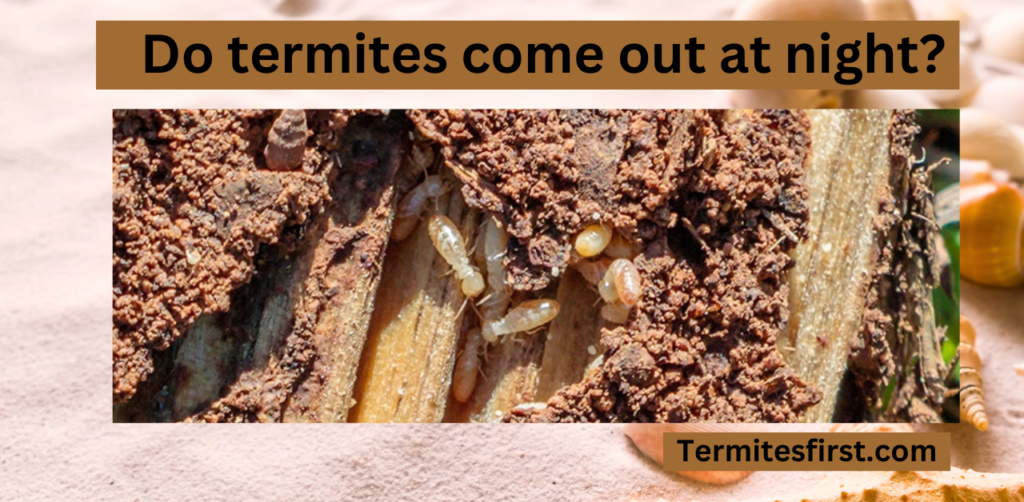
Temperature
Temperature significantly influences termite activity, with most species preferring warm climates for optimal movement and reproduction. Warmer temperatures can accelerate their metabolism, leading to increased feeding and colony growth.
Humidity Levels
Humidity levels play a crucial role in termite behavior, affecting their ability to retain moisture within their bodies. High humidity attracts termites, as they thrive in moist environments where they can feed on wood and establish colonies.
Light Exposure
Light exposure is a key factor that influences the behavior of termites. These pests usually avoid light and prefer dark, damp areas such as soil, tunnels, or wooden structures. Therefore, termites are more likely to come out at night when it’s darker and safer for them to forage for food without the risk of exposure.
In my experience dealing with termite infestations, I’ve found that controlling moisture levels in your home can significantly reduce the risk of attracting these destructive pests. By fixing leaks promptly and ensuring proper ventilation, you can create an environment less conducive to termite activity.
Night vs Day Activity
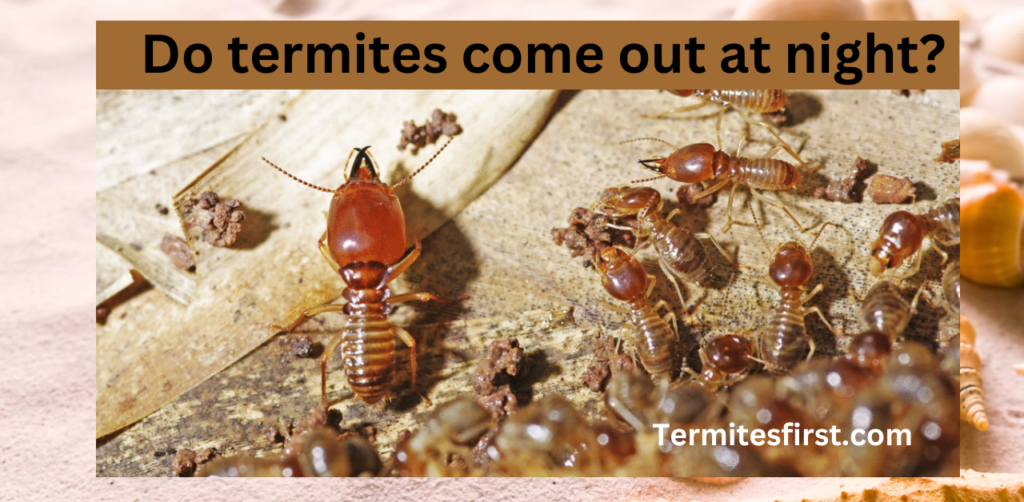
Nocturnal Behavior
Most termite species are nocturnal, meaning they are most active during the night. This behavior is influenced by factors such as temperature and humidity. During the night, termites come out to forage for food and build their colonies.
Drywood Termites
Drywood termites, unlike other species, can be active during both day and night. They do not require as much moisture as subterranean termites, allowing them to work round the clock. Their activity patterns may vary based on the availability of light and temperature.
Subterranean Termites
Subterranean termites, on the other hand, are more active at night or early in the morning. These termites build their colonies underground and rely on moist environments to survive. Therefore, they tend to avoid exposure to sunlight and prefer cooler temperatures for their activities.
In my experience dealing with termite infestations, understanding their activity patterns has been crucial in effectively managing and eradicating them from homes. By knowing when they are most active, it becomes easier to implement targeted treatments that yield better results.
Preventing Nighttime Activity
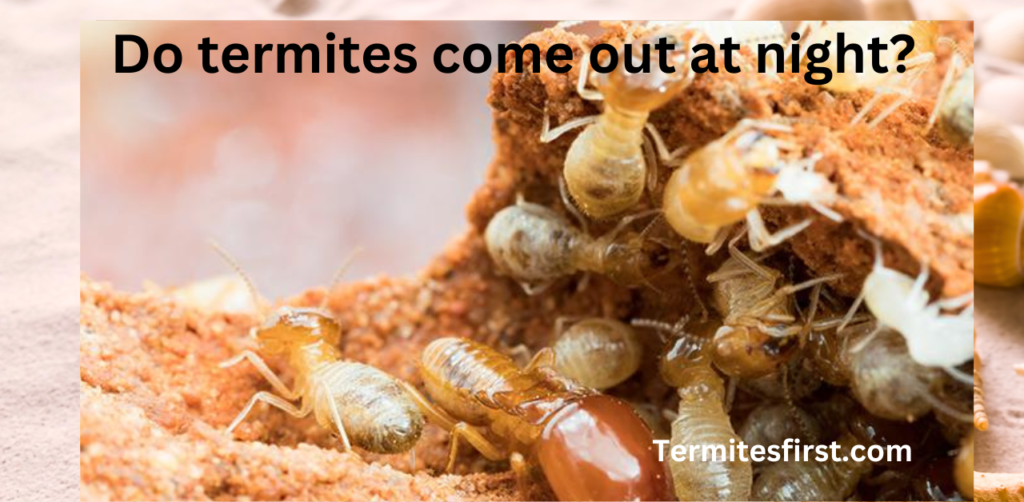
Regular Inspections
Regular inspections help catch termite activity early, preventing extensive damage to structures. Homeowners should schedule annual inspections with pest control professionals to detect termite presence.
Inspectors will look for signs of termite activity such as mud tubes and damaged wood. Early detection allows for prompt treatment, minimizing the impact of infestations.
I remember last year when I found tiny mud tubes in my basement during a routine inspection. It was alarming, but the early detection helped prevent significant damage to my home.
Structural Maintenance
Maintaining structures in good condition is crucial in deterring termites. Fixing leaks promptly and ensuring proper ventilation can reduce humidity levels, making the environment less attractive to termites.
Cracks and crevices in foundations should be sealed to prevent termite entry. Keeping woodpiles away from the house also helps minimize the risk of infestation.
Taking care of my home’s maintenance has become a routine task that I prioritize to keep termites at bay. It’s amazing how small changes can make a big difference in preventing termite problems.
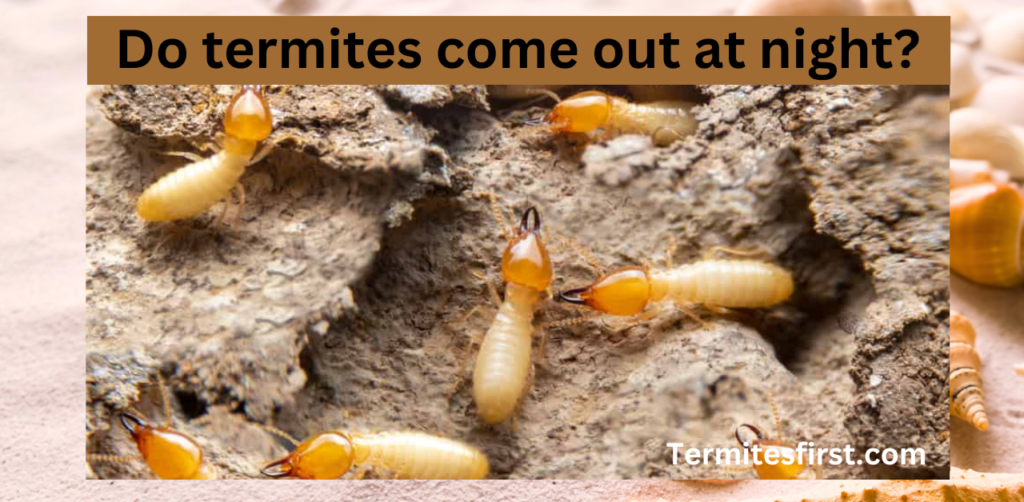
Conclusion:
Understanding termite behavior day and night is essential for effective prevention. By knowing their habits, I can protect my home from potential damage. Factors like humidity and temperature play a significant role in termite activity patterns. Nighttime is when termites are most active, making prevention strategies crucial to safeguarding your property.
To keep termites at bay, ensure your home is free of moisture and wood debris. Regular inspections and maintenance can save you from costly repairs down the line. Don’t wait until it’s too late; take action now to protect your home from these silent destroyers.
Related: What Do Termite Bites Look Like?
FAQ’s
Yes, termites are more active at night due to their aversion to light. They forage for food, mate, and build colonies during the dark hours.
Moisture, temperature, food availability, and light influence termite behavior. Termites prefer dark, damp environments with easy access to wood.
Termites are primarily nocturnal insects, meaning they are more active at night. They use darkness as cover while searching for food sources.
To prevent nighttime termite activity, eliminate moisture sources near your home, seal cracks and crevices in your foundation, and schedule regular termite inspections.
Preventing nighttime termite activity is crucial as it helps protect your property from structural damage caused by these destructive pests. Regular prevention measures can save you money in the long run.

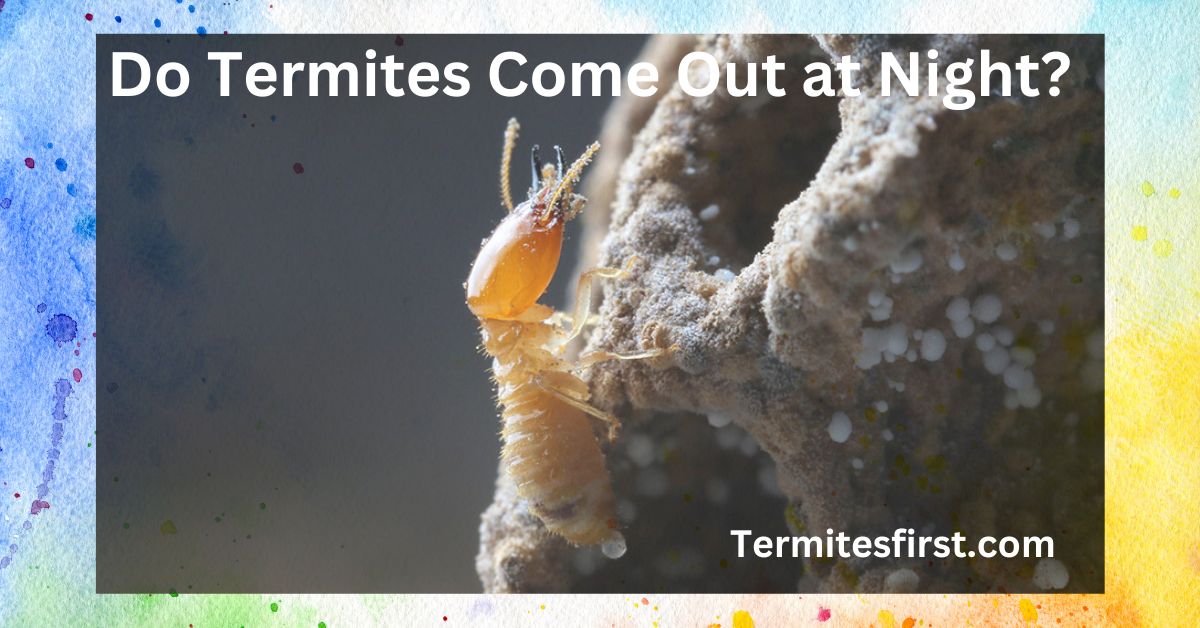
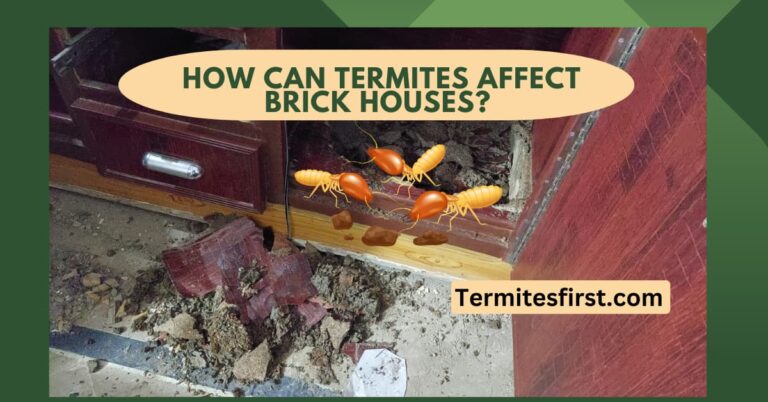
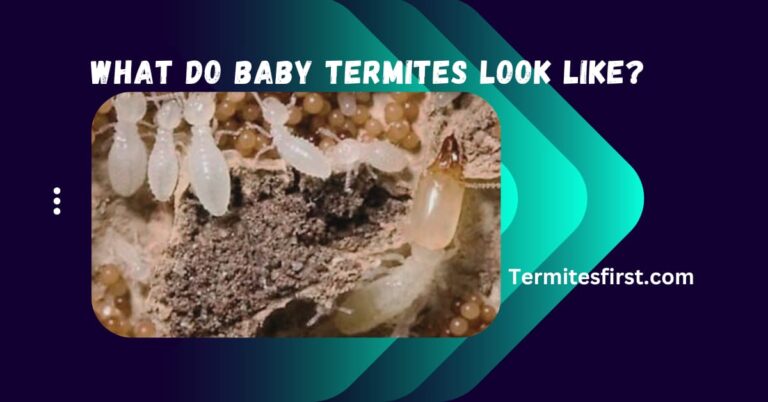

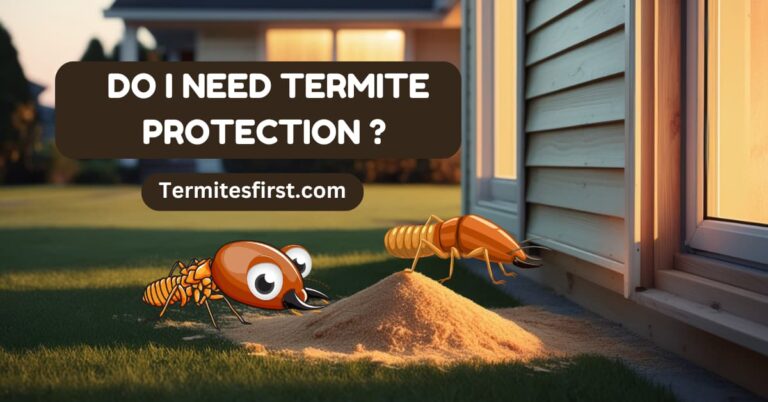
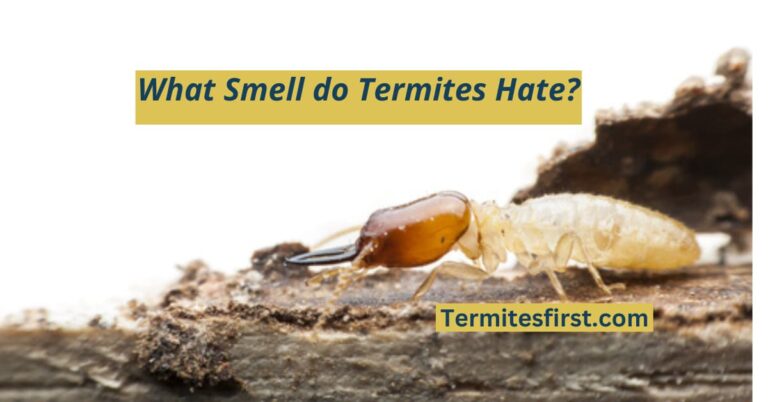

6 Comments